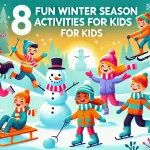Communication is one of the most important skills high school students can develop for their academic, social, and future professional success. But how can teachers make learning communication skills fun and interactive? That’s where communication skills activities for high school students come in. These activities not only engage students but also help them understand the nuances of verbal and non-verbal communication, teamwork, and emotional intelligence. In a world where communication is key to success, high school students, especially those in boarding schools or involved in various academic and sports programs, must master these skills early.
In this blog, we’ll explore the top 9 communication skills activities for high school students that are proven to boost their interpersonal abilities, foster self-expression, and build confidence in group settings.
What Are Communication Skills Activities for High School Students, and Why Are They Important?
Communication skills activities are exercises or games designed to help students improve their ability to express themselves clearly, listen actively, and understand the perspectives of others. These activities encourage teamwork, empathy, and collaboration—all of which are essential skills for high school students’ personal and academic development. Effective communication not only aids in classroom discussions but also prepares students for future leadership roles, college, and the workforce.
9 Best Communication Skills Activities for High School Students
| Activity Name | Skills Developed | Description |
| Famous Pairs | Questioning, Listening, Social Interaction | Students guess their assigned famous duo by asking yes/no questions. |
| The Enigmatic Self | Self-awareness, Articulation | Students write descriptive sentences about themselves; others guess the writer. |
| Stand Up for Fillers | Public Speaking, Speech Clarity | During a short speech, others stand when fillers like “um” are used. |
| Blindfold Game | Verbal Communication, Trust | Blindfolded student navigates an obstacle course based on a partner’s instructions. |
| Drawn Understanding | Listening, Clear Expression | One student describes an image, and the other draws it based on instructions. |
- Famous Pairs
In this game, students are assigned famous duos (like Batman and Robin or Romeo and Juliet). Without knowing who they are, they must ask questions to find their pair, improving their questioning and listening skills. - The Enigmatic Self
Students write three descriptive sentences about themselves, and others must guess who wrote what. This activity encourages self-awareness and the ability to articulate thoughts. - Stand Up for Fillers
This game focuses on eliminating filler words like “um” or “like.” Students must give a short speech, and others stand up when they notice fillers, helping to refine speech clarity. - Blindfold Game
In pairs, one student is blindfolded while the other gives instructions to navigate through an obstacle course. This develops trust and effective verbal communication. - Drawn Understanding
One student describes an image, and the other must draw it based solely on the description. This enhances both listening and speaking skills. - Emotion Awareness
Students practice expressing different emotions through their tone of voice and body language while saying neutral sentences. This builds awareness of non-verbal communication cues. - Situations Samples
Present hypothetical scenarios, and students must role-play how they would respond, promoting adaptability in various communication settings. - Eye Contact Circle
Students sit in a circle and practice maintaining eye contact with one another while speaking, which boosts their confidence and non-verbal communication. - Role-playing
Students engage in role-playing different real-life scenarios, such as a job interview or a team meeting, to practice communication in professional and casual settings.
The Importance of Teaching Kids Communication Skills
Communication skills are vital in academic programs, sports, and especially in a boarding school setting, where students must communicate with peers, teachers, and even coaches. Team sports require collaboration and strategic communication on and off the field. Academic programs demand clear articulation of thoughts during presentations, discussions, and group projects. Boarding school life brings students from diverse backgrounds together, making effective communication essential for building a strong community and resolving conflicts.
6 Communication Skills Activities High School Teachers Can Implement
| Activity Name | Skills Developed | Description |
| Guide the Blindfolded | Detailed Instruction, Teamwork | One student guides a blindfolded partner to a specific location using precise language. |
| Back to Back | Listening, Descriptive Skills | One student describes an object or pattern, while the other draws it based on instructions. |
| Team Debate Tournament | Persuasive Communication, Critical Thinking | Students participate in a debate on assigned topics, encouraging logical argumentation. |
| You Don’t Say | Non-verbal Communication | Students act out scenarios or phrases without speaking, focusing on body language. |
| Charades | Non-verbal Communication | Students act out words or phrases, improving understanding of gestures and expressions. |
| Emoji Awareness | Facial Expression, Emotion Recognition | Students express emotions silently, focusing on facial expressions and body language. |
In addition to the above activities, here are six more fun communication activities specifically for teachers:
- Guide the Blindfolded
Similar to the Blindfold Game but with an added twist—students must give highly detailed instructions to guide their partners to a specific location. - Back to Back
Two students sit back-to-back, and one describes a pattern or object while the other draws it. This enhances listening and descriptive skills. - Team Debate Tournament
Divide the class into teams for a debate on a fun topic. This encourages critical thinking and persuasive communication. - You Don’t Say
In this activity, students act out a situation or phrase without speaking, and others must guess the message, promoting body language awareness. - Charades
A classic game that encourages non-verbal communication by having students act out words or phrases. - Emoji Awareness
Students are tasked with expressing emotions through facial expressions and body language without speaking, mirroring the use of emojis in digital communication.
Conclusion
Communication skills are fundamental to personal and professional success, and high school is the perfect time to develop them. By incorporating these activities, students improve their skills of speaking and listening, will gain confidence and learn the importance of empathy and understanding in their interactions.
Frequently Asked Questions
1. Which game helps in effective communication?
Games like the Blindfold Game and Drawn Understanding are great for improving effective communication through teamwork and detailed verbal instructions.
2. How to teach communication in a fun way?
Incorporating interactive activities like charades, role-playing, and team debates can make learning communication skills enjoyable for students.
3. What is an example of a communication game?
The “Famous Pairs” game is an excellent example of a communication game that encourages both verbal and non-verbal skills in a fun and engaging way.


